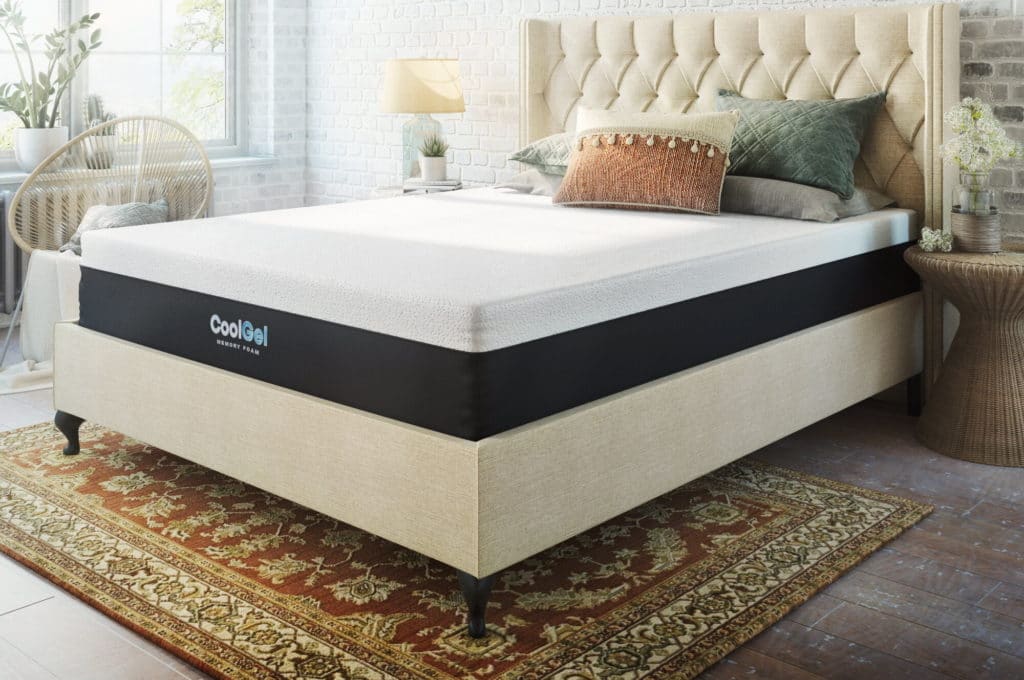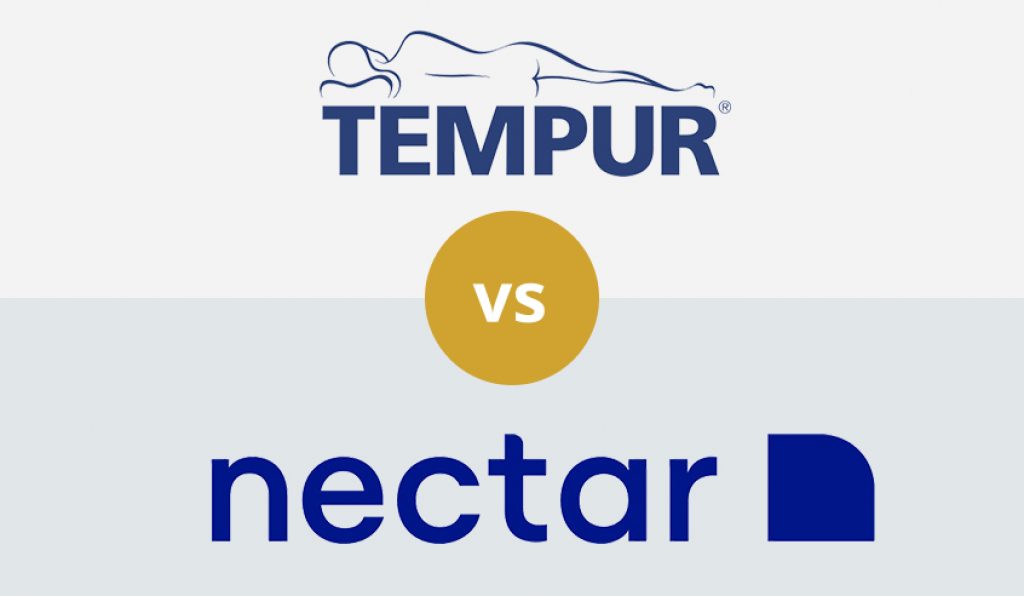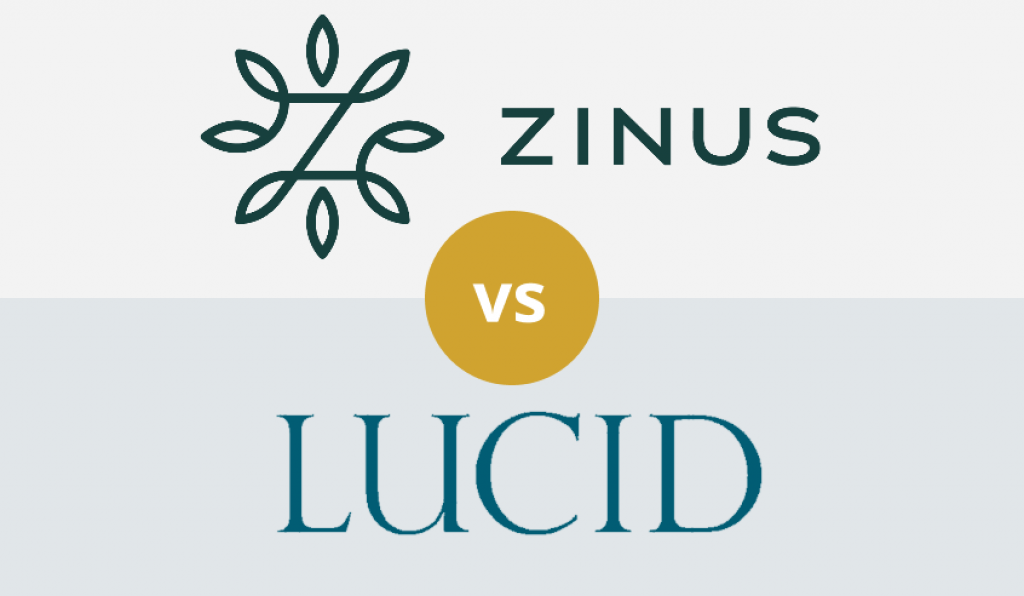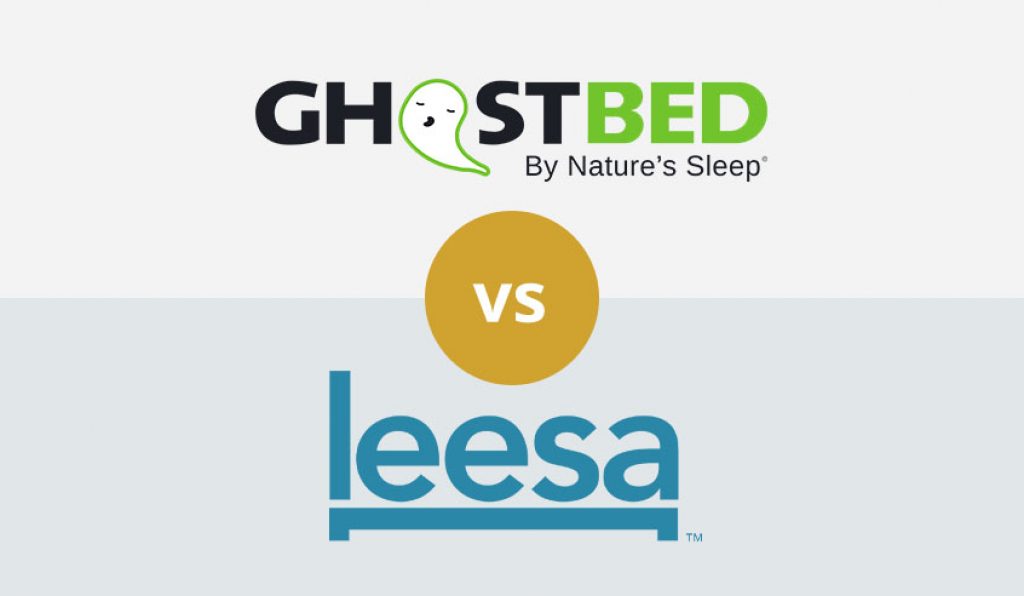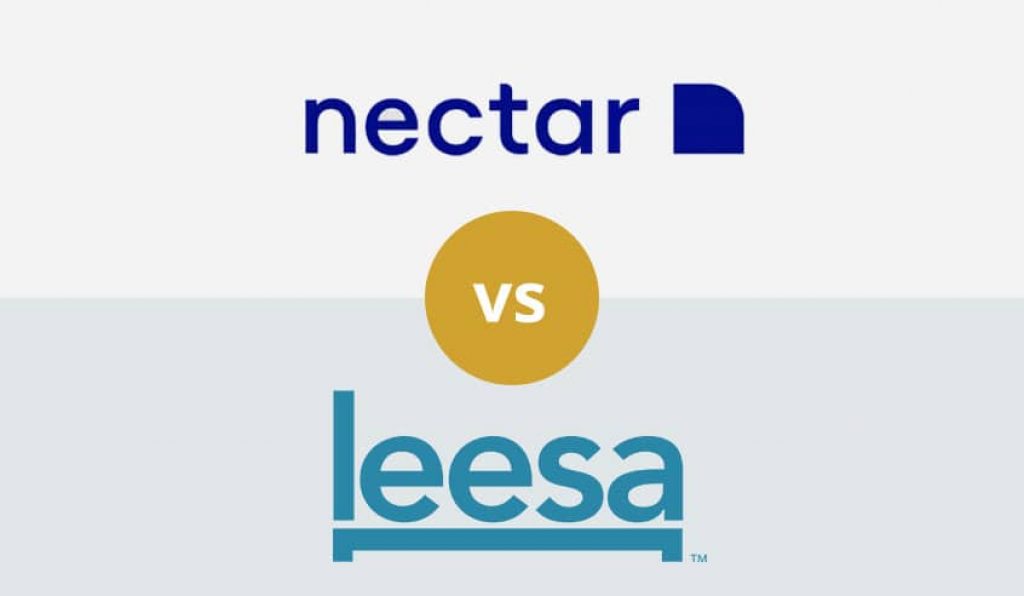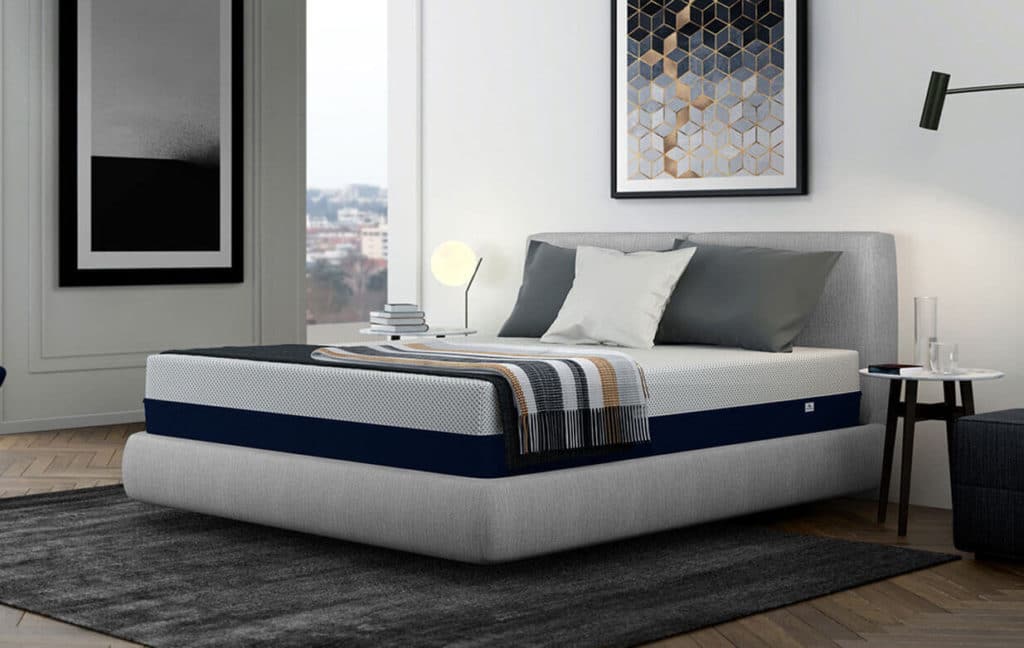

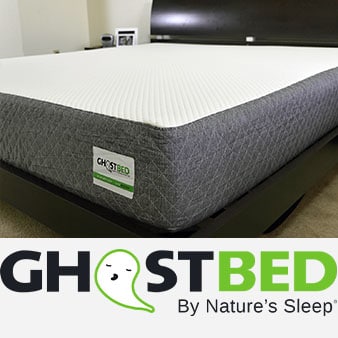
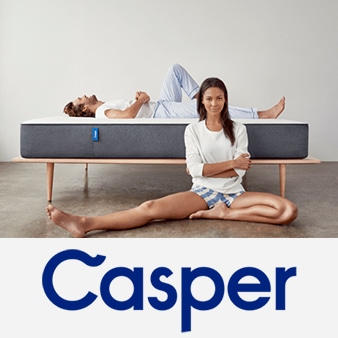
In recent years, memory foam mattresses have been perfected, to make them the ideal choice for those who are looking for a balance of comfort and support. Memory foam mattresses allow body weight to be evenly distributed for optimum support and to relieve aches and pains from individual pressure points. This encourages a restful night’s sleep, and you can wake feeling refreshed and revitalized. Two great examples of this are the Ghostbed and Casper mattresses. Both of these options are designed to offer superb comfort and excellent support. So, how do they stack up against each other in a head to head Ghostbed vs Casper comparison?
Casper has been around since 2014, and its flagship mattress features polyfoam and memory foam layers with a high density base layer. This mattress is considered to offer medium firm support with a below average price point. The Casper mattress is designed with a comfort layer and three separate components. The middle memory foam layer has been placed between polyfoam top and bottom layers. There is also a polyfoam core for additional stability and support.
Ghostbed was founded around the same time in 2015, and its flagship bed has layers of gel memory foam and synthetic Dunlop latex in addition to a polyfoam high density base layer. This mattress is also at a below average price point and offers a similar level of support. The body conforming memory foam of this mattress is teamed with latex for stability and responsiveness to create a balance of firmness and softness that is ideal for average weight sleepers to improve spinal alignment and thus alleviate aches and pains.
| GhostBed | Casper |
|
|
| VIEW ON AMAZON | VIEW ON AMAZON |
| GhostBed | Casper | |
| Type | Foam | Foam |
| Firmness | Medium Firm (6.5) | Medium firm (6.5) |
| Thickness | 11″ | 12″ |
| Weight | 89 lbs | 85 lbs |
| Sleep trial | 101 nights | 100 nights |
| Warranty | 20 years | 10 years |
| Price | $895 (Queen) | $1,095 (Queen) |
| Certification | Certi-PUR-US | CertiPUR-USOeko-Tex Standard 100 |
| GhostBed | Casper | |
| Support core | 7 1/2″ 2 PCF HD Polyfoam | 7″ 1.8 PCF HD Polyfoam |
| Comfort layers | 1 1/2″ Synthetic Dunlop Latex2″ 4 PCF Gel Memory Foam | 1.5″ Polyfoam1.5″ 4 PCF memory foam 1.5″ latex-like foam |
| Cover | Viscose/polyester blend | Polyester |
Both mattresses are designed to support couples and offer medium firm support. While the Casper has slightly more depth, both mattresses include several layers to provide support, bounce and breathability. So, we need to explore in a little more detail what separates these mattresses for a more accurate comparison.
The Casper is made with a three tiered system including top and bottom layers of polyfoam. The core is an open structure memory foam and together these layers offer close conforming to alleviate aches and pains and improve spinal alignment. This makes the Casper highly supportive with a polyfoam high density base layer to reinforce the mattress and maintain an even sleeping surface.
The Ghostbed is made using layers of gel memory foam Dunlop latex to create the Medium Firm feeling with some levels of conforming. The latex layer is designed to help maintain a neutral temperature for a cooler sleep.
Unfortunately, since both companies have only been in business for less time than the standard warranty, it is difficult to gauge how the mattresses will continue to perform in the long term.
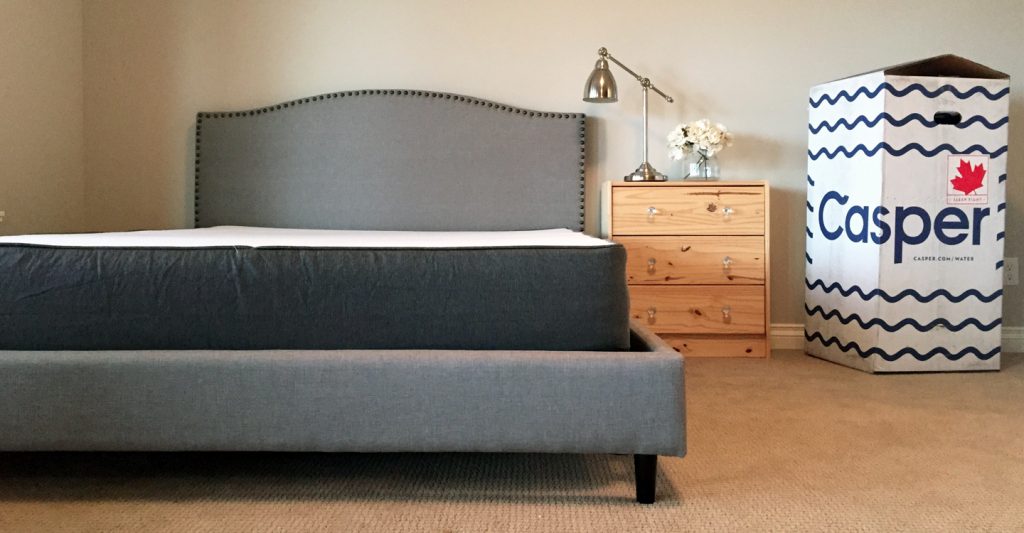
Both mattresses are rated as offering similar medium firm support, which provides moderate levels of firmness suitable for most sleepers. The Casper features four layers of different foams to provide this support, while the Ghostbed has three types of foam. With such similar figures, there is not much to separate these two mattresses in this category.
Here is where the gaps in the comparison start to appear. Although Casper claims that the open cell latex construction will help to keep you cool, Ghostbed has included a 2” layer of cooling gel memory foam that was developed using superior technology and techniques to aid temperature control.

The Casper has been shown to offer conforming comfort to respond to your body characteristics and provide targeted pressure relief. The Ghostbed closely conforms to alleviate the aches and pains of most sleepers.
Both the Casper and Ghostbed are reported as not being particularly responsive or bouncy. While the multi layered construction is designed to offer support and comfort, there is not much bounce compared to most mixed foam type mattresses. While this may be ideal for those suffering from back pain, it may be problematic for those looking for a little more bounce and resilience in their mattress.
Edge support is an indication of how well a mattress will wear over time. As most of us tend to sit on the edge of the bed to dress, it is crucial that mattresses have sufficient edge support to prevent sagging over time. This is another area where these two similar mattresses stand apart. The Casper has been shown to offer minimal edge support, so it is likely to suffer perimeter shrinkage over time. The Ghostbed offers far better edge support compared to the Casper and many other memory foam mattresses on the market. While it may still be susceptible to sinkage with prolonged sitting, it should offer better results in the long term.
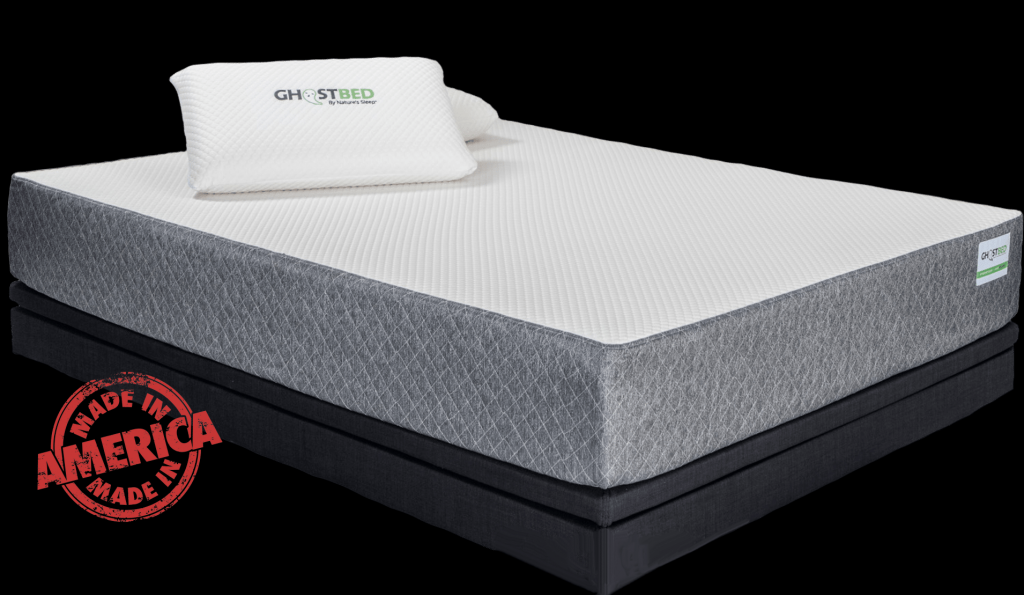
Casper owners have reported that this mattress does have moderate offgassing, but the company does not give any indication of how long this takes to dissipate. The Ghostbed is reported as having little to no odor, which is an extremely rare quality for memory foam mattresses.
| SLEEP POSITION | Light sleepers(less than 130 lbs) | Average sleepers(130 lbs to 230 lbs) | Heavy sleepers(greater than 230 lbs) |
| GhostBed | |||
| Side | good | good | good |
| Back | good | very good | good |
| Stomach | fair | very good | good |
| Casper | |||
| Side | very good | very good | good |
| Back | very good | very good | good |
| Stomach | good | good | fair |
The Casper is rated at medium firmness with a 5.5 score, making it optimal for sleepers weighing between 130 and 230 pounds. This mattress provides good pressure relief and conforming for those who weigh less than 130 pounds. The Casper also isolates motion transfer and produces minimal noise, providing a good sleep experience for couples who experience movement, noise or other sleep disruptions.
While the Ghostbed is also rated at medium firm, it has a slightly higher score at 6, which makes it optimal for sleepers weighing at least 130 pounds. Those who are lighter than 130 pounds may find the Ghostbed a little firm with less than optimal conforming effects. This mattress does sleep cool and isolates motion very effectively with no noise, providing an excellent sleep experience.
| SIZE | GhostBed | Casper |
| Twin | $445 | $595 |
| Twin XL | $645 | $695 |
| Full | $820 | $895 |
| Queen | $895 | $1,095 |
| King | $1,075 | $1,395 |
| California King | $1,095 | $1,395 |
| Split King | $1,290 | N/A |
| Sleep trial | Warranty and | Refund | Delivery | |
| GhostBed | 101 days | 20-year warranty | Full refund | Within the U.S. |
| Casper | 100 days | 10-year warranty | Full refund (minus shipping) | Within the U.S. and Canada |
Both mattresses are offered with a sleep trial, 100 days for the Casper and 101 with the Ghostbed. This provides a full refund in the case of the Ghostbed, but Casper deduct the cost of shipping from its refund. Ghostbed does stipulate that a return can only be initiated after a 30-day usage, but Casper does not appear to have any such clauses.
Another area where the mattresses differ is in the warranty. While the Casper is offered with an impressive 10-year warranty, this pales in comparison to the substantial 20-year warranty offered with the Ghostbed. Both warranties are relatively standard with no coverage for deliberate damage, misuse or comfort preferences.
Both mattresses are boxed for convenient shipping, but Ghostbed promote a “spookily fast” delivery service, as the products are designed and manufactured in the U.S. The company has nine continental locations, so customers typically receive their new mattress within two to five days.
Due to the weight of the Dunlop latex layer, the Ghostbed is over 25 pounds heavier than the Casper, which may make transportation and set up a little more challenging for those with limited mobility.
Pros
Cons
Pros
Cons
In summary, the Casper provides a solid choice for sleepers with sensitive pressure points requiring additional cushioning for the shoulders, lower back and hips. It is also a good choice for those with a sleep partner and looking to limit movement felt during the night with a feeling of a mattress that hugs the body.
The Casper is a good choice for side sleepers weighing less than 230 pounds and the zoned support system provides optimal conditions for average weight sleepers who prefer to rest on their back. However, if you prefer to sleep on your stomach, you may find the Casper lacking mid back and midriff support. The Casper offers a medium feel that may be too soft for larger sleepers who may experience sinkage and sagging that fails to offer proper support.
The Ghostbed is ideal for those weighing more than 130 pounds, but lighter sleepers should find that this mattress offers sufficient support and conforming for a comfortable night’s sleep. This mattress is also suited to those who prefer a higher profile mattress and want to eliminate sleep disruption from movement or noise. The mattress emits no noise and no offgassing, which is unusual in a memory foam mattress.
So in conclusion of this Ghostbed vs Casper comparison, the Ghostbed comes out on top. This mattress has a far more substantial warranty and fantastic construction to offer support, comfort and longevity for any sleeper.
